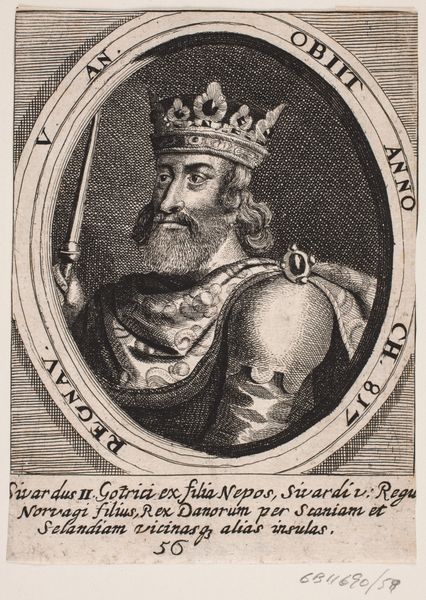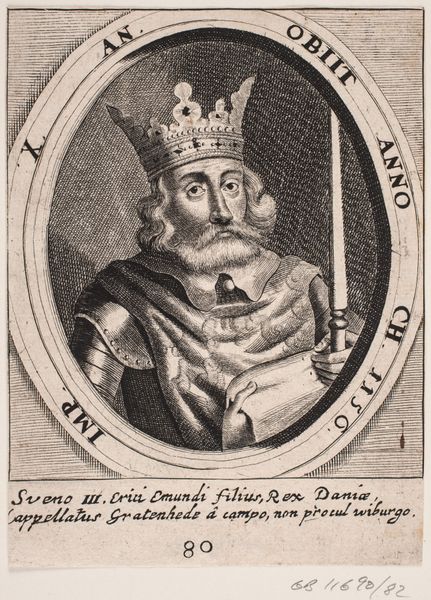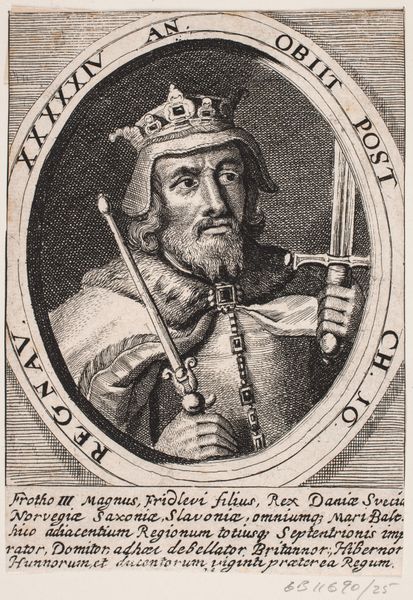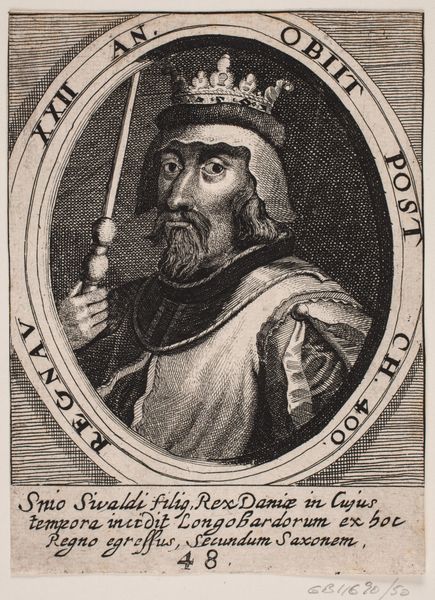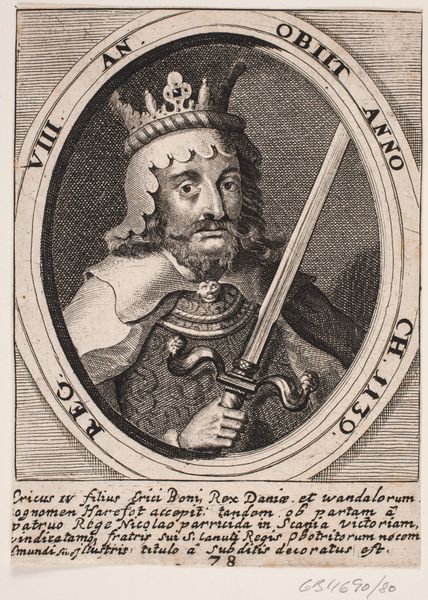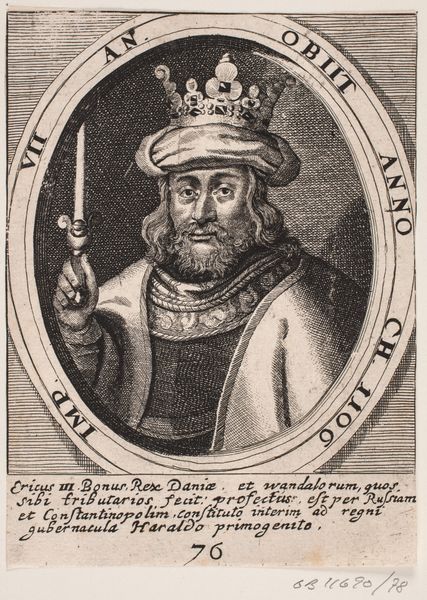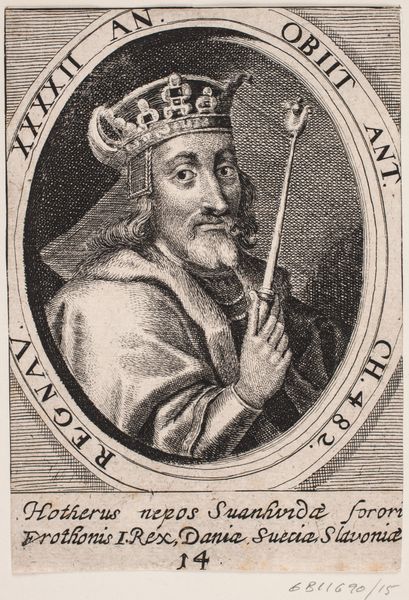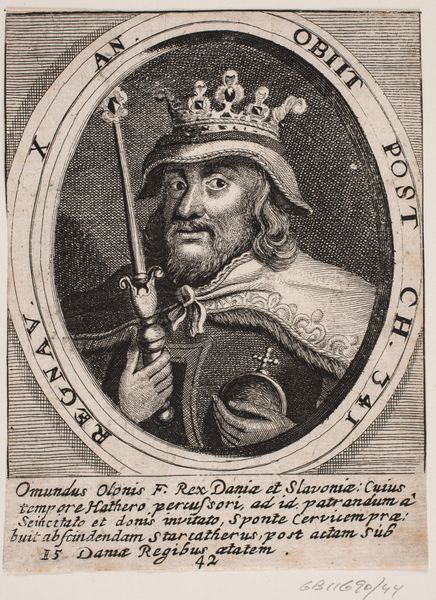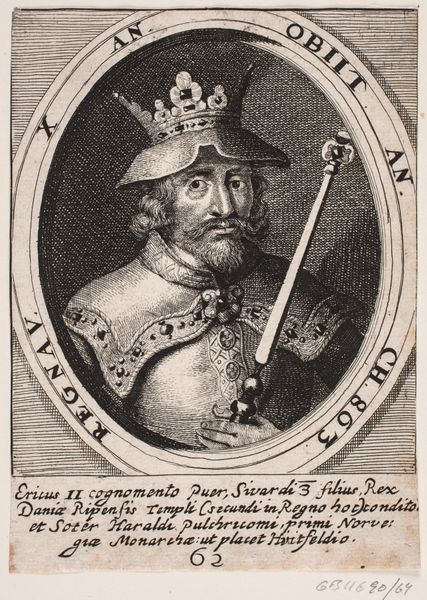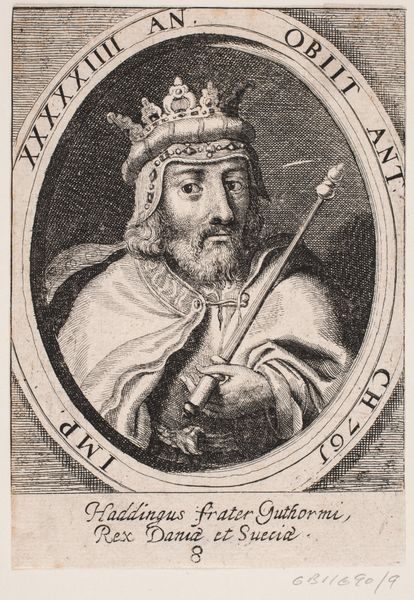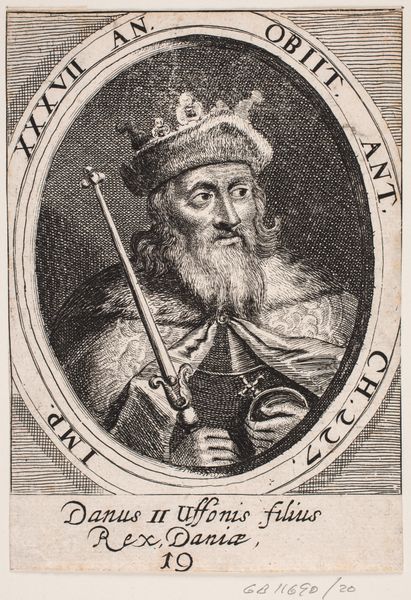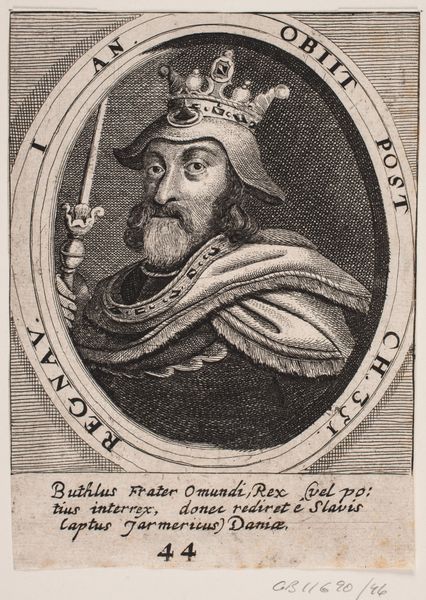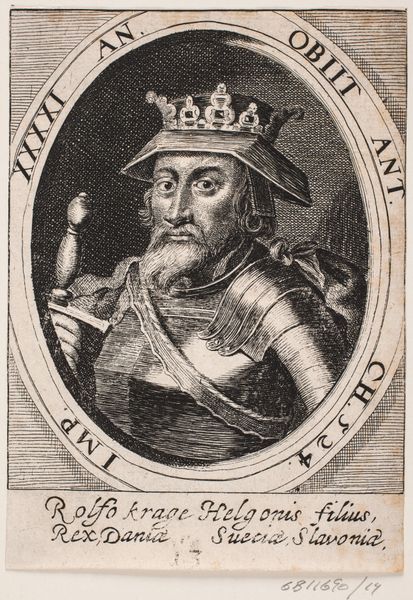
print, engraving
#
portrait
#
medieval
# print
#
caricature
#
history-painting
#
engraving
#
columned text
Dimensions: 140 mm (height) x 100 mm (width) (bladmaal)
Editor: So this is "Knud den Hellige," or Canute the Holy, a print from 1646. What strikes me is how stoic he looks. Given he was a king who was ultimately murdered in a church, I suppose that pensiveness is warranted. How do you interpret the visual choices made in this engraving? Curator: Indeed, this image speaks volumes beyond its literal depiction. Notice the spear he holds—it's both a symbol of royal authority and a premonition of his martyrdom. The halo, of course, signifies his sainthood. But consider the year inscribed: "CH. 1000". Does this accuracy create a historical touchpoint or does it represent a kind of longing to be able to rewrite or reconsider how we visualize a complex figure who both held power and was murdered? Editor: That's interesting. I hadn't considered the weight of the spear beyond its obvious regal association, nor that double reading on the date. So it's less about objective historical accuracy and more about how we construct and perpetuate our understanding of a complicated past? Curator: Precisely! Think about the formal pose. Medieval rulers often have iconographic images—symbols meant to express a complicated history into easily digestible forms of reference. Even the crown becomes something more than a marker of power. What emotional connection does that object activate, given that history of violence? Editor: This makes me see the portrait completely differently now. It’s not just a depiction, but an exploration of the weight of symbols and how they evolve over time, informed by cultural memory. Thanks! Curator: My pleasure. Thinking about this from the vantage of icons creates another level of consideration and demonstrates the evolving power of visual imagery.
Comments
No comments
Be the first to comment and join the conversation on the ultimate creative platform.
